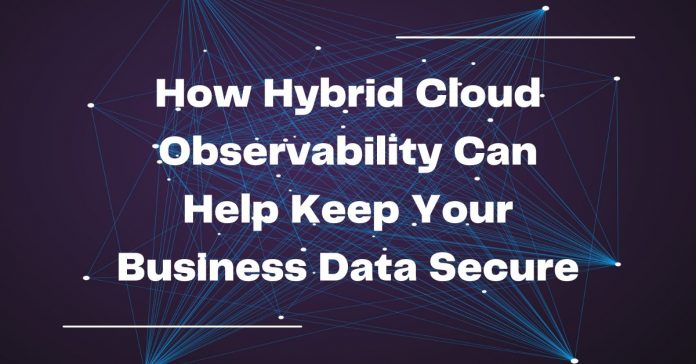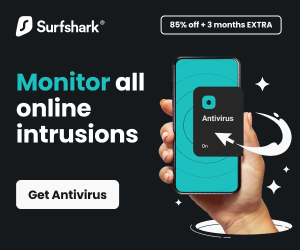Hybrid cloud observability can be defined as the level at which organizations can evaluate the internal conditions and states of their complex hybrid systems using outputs produced by the systems.
Every smart business owner understands that an observable system makes it easy for them to identify performance issues and fix them before they can affect their entire operations. This does not even require them to deploy additional coding or testing.
Observability in cloud computing can also be used to refer to the different practices and software tools that organizations use to analyze, correlate, and aggregate performance data from different applications. This is where business data comes in.
READ ALSO: Enterprise Security Guide
Table of Contents
Data And Hybrid Cloud Observability
Technological advancements have led to an increasing number of organizations adopting hybrid cloud solutions. These are solutions that allow them to not only use cloud solutions but also deploy some of their solutions to on-premise, distributed, colocation, or owned data centers.
This poses a challenge when it comes to the safety of business data. Data is now one of the most important assets for all businesses. This means that apart from abiding by different set regulations, businesses need to implement different measures to prevent a data breach.
So, how can hybrid cloud observability help keep your business data secure? Well, one needs to understand the difference between observability and monitoring to see how hybrid cloud observability keeps business data secure.
Monitoring allows organizations to analyze collected data in a bid to eliminate issues with system performance. Observability, on the other hand, ensures that organizations have all the information that they need to identify and handle problems that their teams might not be aware of.
READ ALSO: Cloud Storage Guide For Businesses and Individuals
Choosing Hybrid Cloud Observability Software
The challenge comes when choosing the right hybrid cloud observability software. One of the main reasons for this is the many software applications that we have today, thanks to advancements in technology.
Among all these solutions, SolarWinds’ Hybrid Cloud Observability features such as the ability to automate, remediate, observe, and visualize business environments make it one of the best solutions.
When selecting software for hybrid cloud observability, ensure that the chosen software application includes all the necessary features. This is crucial in maintaining the security of your business data.
READ ALSO: Top Challenges and Solutions in Securing Hybrid Cloud Environments
How Can Hybrid Cloud Observability Help Keep Your Business Data Secure?
One of the major benefits of hybrid cloud observability is that an observable system can be easily understood, both in general terms and in detail. Such a system is also easy to manage and repair, safe and easy to update, and quick to monitor.
Apart from these benefits, hybrid cloud observability can also help your business to keep its data secure.
Here is how;
Catching and solving issues in good time
Hybrid cloud observability allows organizations to incorporate monitoring in the early stages of the software development lifecycle.
In addition, teams can monitor networks when they are being set up instead of waiting until they are entirely deployed. With such monitoring and observability, organizations can catch issues that might affect the security of their data and fix them. This ensures that business data is secure even after deployments.
READ ALSO: How Observability Solutions Transform IT Operations
Identifying and addressing unknowns
One of the limitations of other monitoring and observability solutions is that they are designed to identify issues that are already known. What about an issue that might not be known and might lead to data leaks?
This is where hybrid cloud observability comes in. It helps organizations identify and address even those issues that they might not be aware of, and that might affect the security of their business data.
Self-healing infrastructures
Hybrid cloud observability combines automation and machine learning capabilities to help organizations predict issues that might affect the security of their business data.
These predictions are made based on the output of the organization’s system outputs. The issues are then resolved automatically without any manual intervention. This ensures that business data is secure.
Automatic scaling of observability
As a business grows, so do its systems. When this happens, there is increased data that needs to be analyzed and processed.
In addition, organizations have to make sure that this data is secure. Fortunately, hybrid cloud observability allows for automatic scaling of observability to ensure that business data is secure no matter how a business grows.
So, Do You Need Observability?
Every business that is adopting CI/CD (continuous integration and continuous deployment), agile development, different programming languages, DevOps, and cloud technologies needs to implement hybrid cloud observability.
This is vital in determining the success and security of business data and solutions.
How Hybrid Cloud Observability Can Help Keep Your Business Data Secure: FAQs
In today’s hybrid cloud environments, where businesses spread data across on-premises infrastructure and public cloud services, maintaining data security is crucial. Hybrid cloud observability offers valuable tools to strengthen your data security posture.
Here are some FAQs to understand how:
How does a lack of observability impact data security in a hybrid cloud?
Limited visibility across your entire hybrid cloud environment creates blind spots. Attackers can exploit these gaps to:
- Move undetected: Traditional security tools might not have a complete view of suspicious activity across all platforms.
- Exfiltrate data: Sensitive data might be transferred out of the cloud without being flagged due to limited monitoring.
- Exploit vulnerabilities: Unidentified vulnerabilities in on-premises systems or cloud configurations become easier targets.
How can hybrid cloud observability improve data security?
Observability provides a comprehensive view of your entire IT infrastructure, offering several security benefits:
- Enhanced Threat Detection: By monitoring all system components, unusual activities or anomalies can be identified faster, helping to detect potential security threats.
- Improved Incident Response: Observability tools can pinpoint the root cause of security incidents quicker, allowing for faster and more effective response.
- Compliance Monitoring: Observability tools can help ensure your systems adhere to relevant security compliance regulations.
What are some specific features of observability tools that enhance data security?
- Log Management: Aggregates and analyzes logs from various sources across your hybrid cloud, providing insights into potential security issues.
- Application Performance Monitoring (APM): Monitors application behavior and can detect suspicious activity within your applications.
- Security Information and Event Management (SIEM): Correlates data from various security tools to identify and prioritize security threats.
How can I implement hybrid cloud observability for better data security?
- Choose Observability Tools: Select tools that provide visibility across your entire hybrid cloud environment, including on-premises and cloud resources.
- Standardize Data Collection: Ensure consistent data collection and log formats across your hybrid cloud for better analysis.
- Set Security Alerts: Configure alerts to notify security teams of suspicious activities or potential security breaches.
- Invest in Security Expertise: Consider building a team with expertise in both security and observability tools to maximize their effectiveness.
Are there any limitations to consider with hybrid cloud observability for data security?
- Complexity: Managing observability tools across a hybrid cloud can be complex, requiring ongoing effort and expertise.
- Data Volume: The vast amount of data generated in a hybrid cloud can be overwhelming, requiring proper data storage and analysis capabilities.
- Cost: Implementing and maintaining observability tools can incur additional costs.
Bottom Line
By implementing a robust hybrid cloud observability strategy, you gain a significant advantage in securing your business data.
Improved visibility allows for faster threat detection, efficient incident response, and overall better data security posture in your hybrid cloud environment.
INTERESTING POSTS
- What Are The VPN Features And Benefits?
- Full Review Of eM Client 8 Email Management Application
- 5 Ways To Identify Phishing Or Fake Websites
- What Is Automated IP Address Management?
- How To Keep Your Cloud Storage Safe And Secure
- How To Patiently Read Terms And Conditions Agreement
- Quality Assurance: Definition And Explanation
- Exclusive Interview With Dan Olson, CEO Of UpCity
About the Author:
Daniel Segun is the Founder and CEO of SecureBlitz Cybersecurity Media, with a background in Computer Science and Digital Marketing. When not writing, he's probably busy designing graphics or developing websites.










